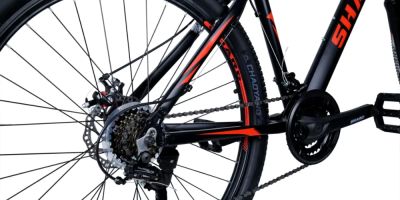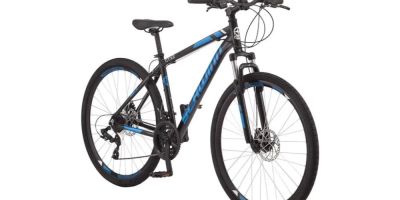- 1-Folding Bikes-Overview-Quick Fold Mechanisms
- 2-Advantages-of-Quick-Fold-Mechanisms
- 3-Design-Features-and-Engineering-Innovations
- 4-Real-World-Usage-and-User-Experiences
- 5-How-to-Choose-the-Right-Folding-Bike
- 6-Maintaining-Your-Folding-Bike-for-Longevity
1. Folding Bikes with Quick Fold Mechanisms: An Overview
In today’s fast-paced urban lifestyle, space-saving and portability have become top priorities for many commuters and cycling enthusiasts. Folding bikes with quick fold mechanisms answer this demand by offering a smart solution to mobility and storage challenges. Unlike traditional folding bikes that may require multiple steps and considerable time to collapse, these models incorporate innovative mechanisms allowing riders to fold their bikes swiftly and compactly, often in under 10 seconds.
The quick fold design enables seamless transitions between riding and carrying, whether hopping on public transportation, storing the bike under a desk, or packing it into a car trunk. This convenience has sparked rising interest among city dwellers, frequent travelers, and anyone looking to combine cycling with other modes of transport. The integration of quick fold mechanisms is a game-changer, making folding bikes more accessible and practical than ever before.

Mike's Bikes of Berkeley
1824 University Ave, Berkeley, CA 94703, USA
2. The Key Advantages of Quick Fold Mechanisms in Folding Bikes
2.1 Speed and Convenience for Daily Use
The defining advantage of quick fold mechanisms is the drastic reduction in fold time. Riders no longer need to spend several minutes adjusting latches and hinges; instead, they can rely on intuitive levers or one-step releases. This speed means less hassle and greater flexibility for those with tight schedules or last-minute changes in plans.

Urban Bicycle Gallery
801 Durham Dr, Houston, TX 77007, USA
2.2 Enhanced Portability Without Compromising Durability
Quick fold mechanisms often come paired with compact frame designs that keep the folded bike size minimal. Manufacturers achieve this through clever engineering, ensuring that rapid folding does not weaken structural integrity. Many models use high-grade aluminum or carbon frames to balance lightweight portability with strength, providing confidence in performance on city streets.
2.3 Versatility in Multi-Modal Commuting
Urban commuters frequently switch between biking, buses, subways, and rideshares. Folding bikes equipped with quick fold systems can be collapsed immediately upon arrival at a transit station, reducing wait times and improving overall trip efficiency. This adaptability makes them ideal for mixed-mode travel, a growing trend in sustainable urban transportation.
3. Design Features and Engineering Innovations Behind Quick Fold Mechanisms
Folding bikes with quick fold mechanisms integrate several technological advancements that distinguish them from traditional models:
3.1 One-Touch Folding Levers and Magnetic Locks
Many quick fold designs utilize one-touch levers that release the frame with a simple push or pull, minimizing complicated manual steps. Magnetic locks help secure the folded frame instantly, preventing accidental unfolding during transport.
3.2 Compact Joint and Hinge Engineering
Innovative hinge placement ensures the bike folds into a neat package. Some models fold vertically, others horizontally, but all aim to reduce bulk. The engineering also considers the bike’s center of gravity when folded, making it easier to carry or roll.
3.3 Integrated Carrying Handles and Wheels
To complement quick folding, manufacturers incorporate ergonomic handles and small transport wheels, turning the folded bike into a wheeled suitcase-like carrier. This feature enhances user comfort during short hauls or navigating crowded stations.
4. Real-World Usage and User Experiences with Quick Fold Bikes
Consider the story of Emily, a graphic designer in New York City who recently switched to a folding bike with a quick fold mechanism. Her daily commute involves cycling from her apartment to the subway, taking a train, then cycling again. Previously, managing a bulky folding bike delayed her and made her trips stressful.
Since upgrading to a quick fold model, Emily folds her bike in less than 8 seconds, easily storing it in the subway car without occupying extra space or disturbing other passengers. She credits the bike’s convenience with helping her maintain a healthier lifestyle and reduce reliance on rideshares, saving both time and money.
Industry reviews also highlight increased demand for quick fold bikes, particularly from urban professionals and students who prize mobility and speed. According to a recent survey by Healthy Cycling, over 65% of folding bike users rated quick fold mechanisms as the most important feature when purchasing a bike.
5. How to Choose the Right Folding Bike with Quick Fold Mechanisms
5.1 Assessing Your Commuting Needs and Storage Space
When selecting a folding bike, consider your typical commute length, terrain, and storage options at home and work. Bikes with quick fold mechanisms vary in folded size, weight, and ride quality, so matching features to your lifestyle is critical.
5.2 Evaluating Frame Material and Build Quality
Opt for bikes made with durable but lightweight materials such as aluminum or carbon fiber. A well-engineered frame not only folds quickly but also ensures longevity and comfort.
5.3 Testing the Folding Mechanism
If possible, test fold the bike yourself or watch demonstration videos. Make sure the mechanism feels smooth, secure, and easy to operate. A complex or flimsy fold defeats the purpose of “quick” folding.
For expert recommendations and a wide selection of folding bikes with quick fold mechanisms, visit Healthy Cycling. There, you can find trusted reviews, accessories, and tailored advice to match your cycling goals.
6. Maintaining Your Folding Bike for Longevity and Performance
Owning a folding bike with a quick fold mechanism comes with responsibilities to ensure it performs reliably over time. Regular maintenance includes lubricating hinges, checking locking mechanisms for wear, and keeping moving parts clean to prevent rust or stiffness.
Users should also inspect the bike frame regularly for cracks or misalignments that could compromise safety. Proper storage, ideally in a dry environment, further extends the bike’s lifespan. Taking these simple steps not only protects your investment but also keeps your rides smooth and enjoyable.










